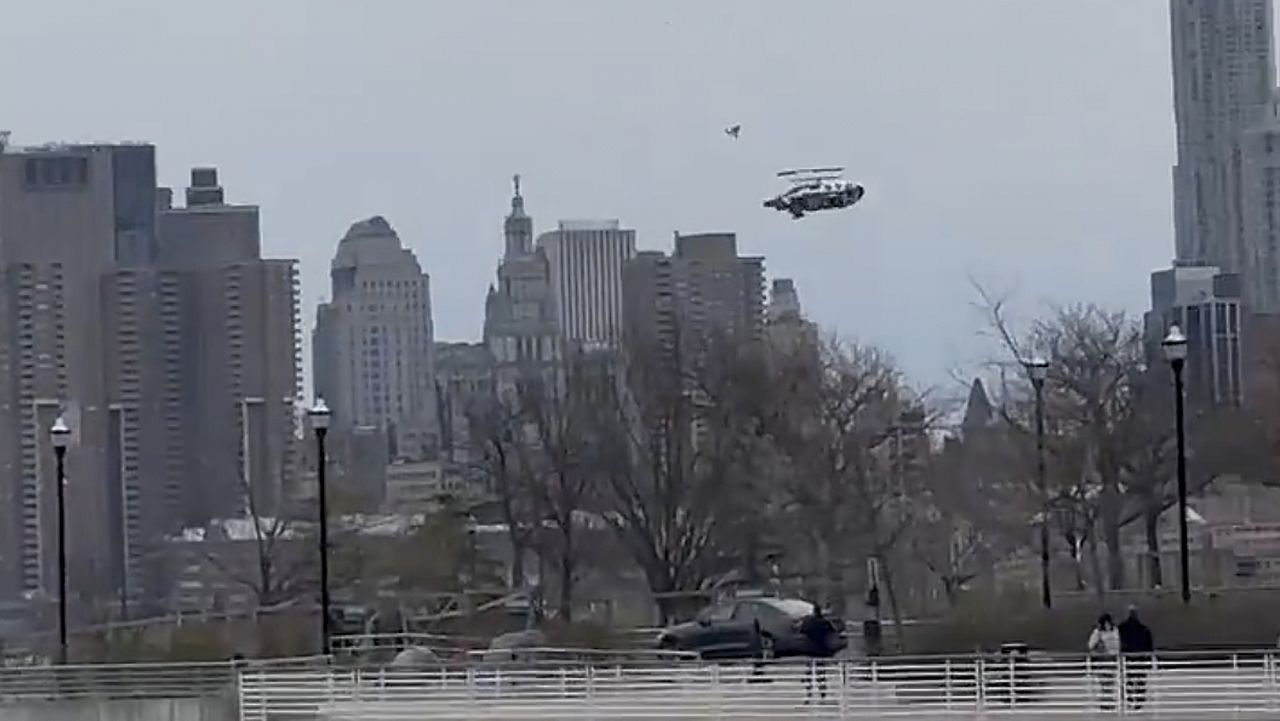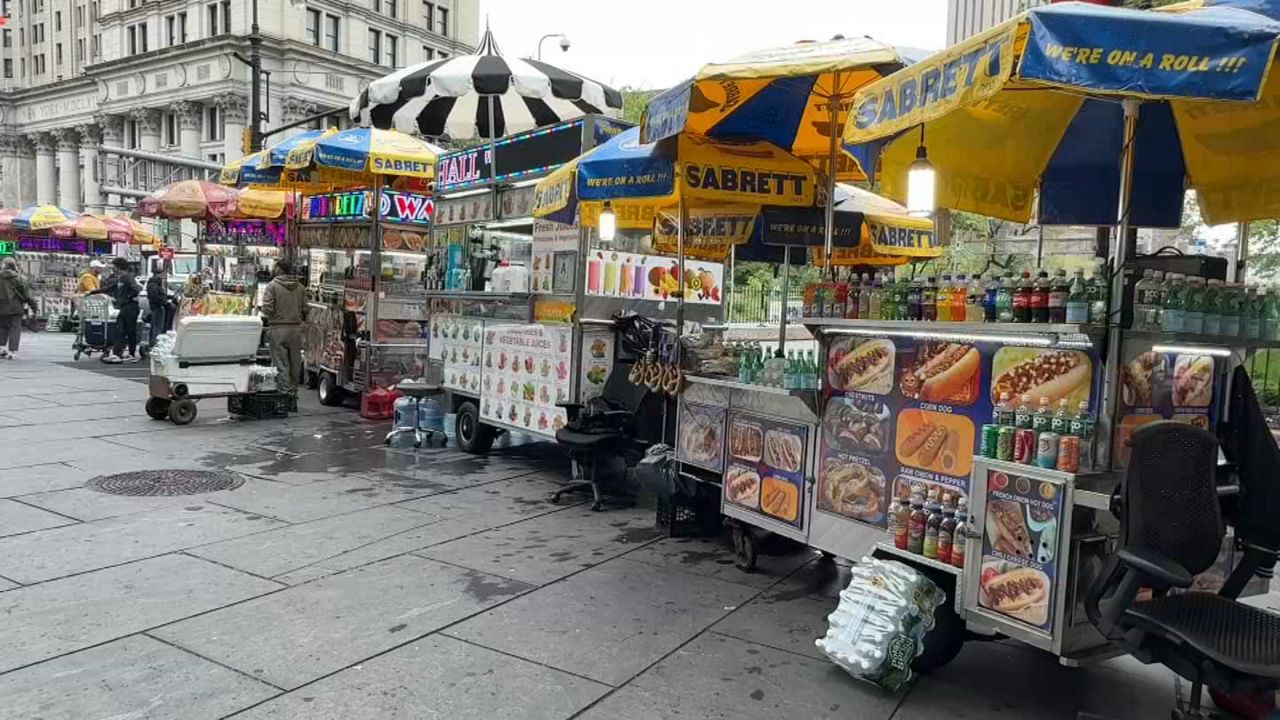In the past few months, dozens of buses ferrying people seeking asylum in the United States have arrived in New York City. Some are arriving at the Port Authority bus depot; others have dropped their passengers off at the buzzing midtown intersections that serve as boarding areas for private bus lines.
Many migrants are arriving with just the clothes on their back and perhaps a blanket, advocates and immigration attorneys say. Some are hungry, dehydrated and ill after multiple days of travel from southwestern border checkpoints. Almost none have any of the belongings or documentation they first brought with them on their journey.
Yet while the stark rise in asylum seekers coming into the city of immigrants has been months in the making, it has led to a sudden local and national political reckoning.
Mayor Eric Adams has focused his attacks on Texas, which is sending the buses. Administration officials say that with more than 5,000 refugees arriving in the city since the spring, city agencies are responding best they can to a sudden and dire humanitarian crisis that is stretching the homeless shelter system to its limits.
City Council leaders, advocates and attorneys, however, note that the shelter population has been rising for months; the new migrants, they argue, would not have been a tipping point in a properly managed social services system.
“It’s a little bit disingenuous to say it's only one thing that's driving this crisis. Because it's multiple things,” said Catherine Trapani, the executive director of Homeless Services United. “While I didn't have this on my bingo card, what we could have anticipated was the need to add more shelter capacity as the census was going up.”
Here is what you need to know about the influx:
Why is the city seeing a rise in people seeking asylum?
Over the past year, the number of people attempting to cross the southern border has been on the rise. In March, border encounters hit a four-year high of more than 222,000 people, according to federal data, and continued to rise through April and May.
The influx has come as the administration of President Joe Biden has sought to relax a rule put in place during Donald Trump’s presidency called Title 42, which essentially closed the southern border, including to legal asylum seeking, over pandemic-related health concerns.
In April, Texas Gov. Greg Abbott, who has long made immigration his centerpiece policy, announced he would begin busing migrants to Washington, D.C., framing the removals as forcing eastern states to deal with the reality of rising refugees.
“I’m going to take the border to President Biden,” Abbott said at the time.
Some of these migrants began ending up in New York City, which is home to many immigration-focused aid groups — as well as a shelter system that is legally required to provide housing, food and services to anyone who requests it.
By July, Adams was responding to concerns about declining capacity in the shelter system by pointing solely to rising numbers of refugees. The mayor, who has sought to create a national political profile for himself over banner issues like public safety, accused Abbott of using migrants as “political pawns.” Earlier this month, Abbott went on Fox News to say that he would begin sending buses directly to New York City.
Since then, several more buses and hundreds more migrants have arrived in the city. City officials say they are relying on national aid groups to inform them about arriving buses, because Texas is not sharing any information.
“We don't know when the next buses will be coming, who is in these buses and what condition the families are,” Manuel Castro, the commissioner for the Mayor’s Office of Immigrant Affairs, said at the Port Authority bus depot Friday morning, after 83 people arrived on two buses.
Is this an unprecedented problem?
New arrivals are nothing new in New York City, where 60% of the population are either immigrants or their children.
Yet the refugees coming via Texas — from Central and South America, central Africa and the Middle East — are arriving at a time when the city’s shelter system is severely overburdened. And they’re arriving in significant numbers.
“It’s not that this has never happened before,” Trapani said. “But the numbers we’re seeing are genuinely unusual.”
The city has also had periods where incoming mayoral administrations exacerbated issues in the shelter system by limiting new shelter construction, Trapani noted. This year, the Adams administration halted plans for at least three new shelters, according to Trapani; now, to respond to the migrant influx, they have opened 11 new shelters under emergency contracting protocols, and have plans for a 600-bed facility in midtown Manhattan that would be three times larger than allowed by state rules.
Yet advocates say they are being hampered in their understanding of this issue in part because it is still not clear to them how many asylum seekers are actually in the city shelter system.
Kliff said she is skeptical that the influx of migrants is as large as the administration claims, or that it is primarily made up of families, as opposed to single adults. She said that she and her attorneys are meeting as many families arriving from the border as those who have been living in New York when conducting outreach at shelters and the city’s shelter intake center.
“It’s very hard to tell what proportions we're talking about here, and the number they’re putting out just seems very large from what we're seeing on the ground,” Kliff said.
A spokesperson for the Department of Social Services said in an email that its estimate counts asylum seekers who have sought shelter services, and is based on self-reported information given during intake interviews. Until recently, the spokesperson said, the department did not track the number of asylum seekers in shelters. The department does not know how many of the new arrivals have left the system.
Why is this straining the shelter system?
Earlier this year, a state moratorium on evictions ended as city rents began to skyrocket, exposing thousands of people to homelessness. The end of the school year also brought a seasonal bump in family homelessness. Local unemployment rates have also remained higher than the national average, especially for Black and Hispanic residents.
The result has been a cratering vacancy rate in shelters, with the rate for shelters that house families with children dropping from 3.5% to under 1% in between the beginning of April and the end of May, according to Legal Aid. The Department of Social Services says its standard vacancy rate is 5%.
Attorneys and advocates say that there have been cascading issues. Shelter residents who need to be moved — such as wheelchair-bound people who can’t use the bathroom they’ve been assigned, or people who risk being found by a domestic abuser — are waiting days for new placements.
“The system needs that wiggle room, to be able to move people quickly,” said Kathryn Kliff, a staff attorney with the Legal Aid Society. “And it doesn't have it right now.”
Shelter providers are also still reeling from pandemic-era impacts, even as they attempt to pivot to serve new migrants: They are maxed out on their credit lines, in some cases still waiting on payments from the city for years-old contracts. Staffing levels across social service agencies and nonprofits are also in freefall, compounding worker stress and making emergency hiring difficult.
“You don't want to build the plane as you’re flying it, and that's the way we're being forced to do things,” Trapani said.
The influx in refugees has had an outsize impact on the shelter system as well, said Maryanna Tharappel, the attorney-in-charge for refugee and immigrant services at Catholic Charities of New York, because, as she estimated, fewer than a tenth of them have any local personal connections.
“This wave of immigrants, notably, by and large, do not have a family or friend tie who can take them in,” Tharappel said.
What are newly arrived migrants experiencing in the city?
Advocates are reporting instances of family separations both in Texas and in the city, as social services agents attempt to find open beds across shelters that are divided by type: for families with children, adult couples and single men and women. Some people are choosing to sleep on the street instead of enter shelters for single adults.
Tharappel said that migrants are also having addresses of local nonprofits written on documents given to them at the border as their official residences. The result, she said, has been organizations like Catholic Charities receiving summonses and court orders by the hundreds for migrants they have no client relationship with, and cannot contact. The people who miss those court dates miss immediate deportation.
A spokesperson for Customs and Border Protection denied any federal role in writing in those addresses.
“The federal government is not involved in the Texas and Arizona government’s busing of migrants to other states,” the spokesperson said.
Migrants are also waiting in long lines at the city’s shelter intake center in the Bronx, in some cases sleeping there overnight, Kliff said — a violation of the right-to-shelter law.
“It’s those types of situations that are really troubling, because they come up all the time,” Kliff said.
What has the political fallout been?
Adams has taken heat from City Council leaders, who called out the administration for poor planning in a hearing Tuesday. Deputy Speaker Diana Ayala said she has been frustrated about how the situation has played out, but believed that city officials were doing their best.
“They could have done better,” she said in an interview Friday. But, she added, “It doesn't help anybody for that to be the narrative right now. We have to move, and we have to act.”
Ayala said the council is exploring legislation that would set a minimum vacancy rate for shelters, and make social services spending more transparent.
The administration has also shown signs of internal turmoil: The top communications officer for the homeless services agency was fired after pushing back against efforts by Gary Jenkins, commissioner for the Department of Social Services, to allegedly hide the fact that families were sleeping overnight at the intake center, NBC New York reported.
The city’s Department of Investigation has opened a probe into the firing, NBC reported Friday. A spokesperson for the department told NY1 it was aware of the issue, but declined further comment.
On Friday, Adams continued to claim that Jenkins was unaware of the right-to-shelter law.
“There are many laws that we must abide by,” Adams said in an interview on WCBS 880. “No families should sleep on the floor. But as I stated, 5,000 individuals have been processed by Gary Jenkins and his agencies. It's really commendable.”
Adams also denied that the press officer was fired over the issue of families having to sleep at the intake center, but said he couldn’t comment on the reason for the termination because it was a private personnel matter.
“I don't think anyone could have better prepared for the influx as we have,” Adams said. “I’m really proud of the response of all of our multiple agencies interacting.”






)
_PKG_Mn_Ban_E-Bikes_Rally_CLEAN)

